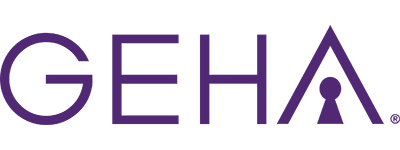Each year, around 100 people die worldwide from eating poisonous mushrooms. The “Death Cap” (Amanita phalloides) is responsible for 90% of them.
The Death Cap is especially dangerous, as just half a mushroom contains enough poison to kill an adult. Knowing that a single mushroom can be this deadly, it’s important to be able to identify psilocybin mushrooms, otherwise known as “magic mushrooms.” These mushrooms grow all over the world and are most common in the Pacific Northwest region of the U.S.
Psilocybin usage in our country is growing. According to a 2021 study, researchers found that 6.6% of adults between the ages of 19 and 30 used hallucinogens other than LSD. These are the highest numbers we’ve seen since the 1980s. While research is looking at the potential therapeutic benefits of psilocybin, the substance remains illegal. Experimenting with magic mushrooms can lead to troubling side effects like elevated heart rate, high blood pressure, hallucinations, anxiety, and paranoia.
Below is more information about psilocybin identification, including how to distinguish these mushrooms from others and the various types and forms it can be found in.
Psilocybin Identification
Psilocybin identification involves recognizing mushrooms that contain psilocybin, a hallucinogenic compound found in hundreds of species worldwide. The most commonly known psilocybin mushrooms typically have small to medium-size caps that are brown or golden in color, with slender stems, and a bluish bruising that appears when touching the mushroom. This is an important part of the identification process. Accurate identification is crucial, as many toxic mushrooms resemble psilocybin mushrooms. If you consume these mushrooms accidentally, it can lead to severe poisoning or death.
Mushrooms containing psilocybin grow on all seven continents. They are most likely to grow in meadows and woods in the tropics and subtropics. You’ll usually find them growing in soil that’s full of old leaves and plant debris. The average person cannot reliably identify magic mushrooms.
Identifying Psilocybin from Other Types of Mushrooms
Identifying psilocybin mushrooms from other types of mushrooms can be tricky and potentially dangerous. There are many non-psychedelic and even deadly mushrooms that closely resemble psilocybin mushrooms. However, there are some key features to pay attention to that can help distinguish psilocybin mushrooms from others.
One of the most distinctive signs is blue staining or bruising, especially on the stem or cap, that appears when handled. This blue coloration shows up when psilocybin reacts to the air. You may also notice a dark purplish-brown to black spore print, which can cause white, pink, or other colored spore prints. Toxic mushrooms usually don’t have these.
Another feature that can help you identify psilocybin mushrooms is the cap. Psilocybin mushrooms typically have golden to carmel-colored caps that are often convex and get flatter with age. Certain species have bell-shaped caps with a distinct “nipple” on top. The gills are usually attached to the stem and start out light but darken as the mushroom matures. They should not be bright white. Also, the stems are usually thin and pale in color and may bruise blue.
What Are the Different Types and Forms of Psilocybin?
“Magic mushrooms” refer to any type of mushroom that contains the psychoactive compound psilocybin. However, there are different types of psilocybin mushrooms, as well as various forms they come in.
The two most popular types of psilocybin are psilocybe cubensis and psilocybe semilanceata. Psilocybe cubensis is the most common species used recreationally. It’s found in subtropical environments and is recognizable by its golden-brown cap and slender white stem. Psilocybe semilanceata (Liberty Cap) is a small, bell-shaped cap with a pointed tip. It tends to grow in grassy fields, especially in North America and Europe. It has a stronger potency compared to psilocybe cubensis.
Psilocybin is also available in different forms. It can be found naturally in fresh mushrooms or dried mushrooms. Most people prefer to eat dried mushrooms, where they are either eaten directly or ground into a fine powder and then added to foods and drinks. Fresh mushrooms can be brewed in tea.
Scientific and Slang Terms for Psilocybin
In casual settings, psilocybin mushrooms may be referred to as:
- Shrooms
- Magic mushrooms
- Boomers
- Caps
- Fungus
- Mushies
- Silly Cybins
- Zoomers
- Sacred mushrooms
- God’s flesh
In professional settings, the scientific names are used instead:
- Psilocybe cubensis (Most common form)
- Psilocybe semilanceata (Liberty Caps)
- Psilocybe cyanescens (Wavy Caps)
- Psilocybe azurescens (Flying Saucer Mushrooms)
- Psilocybe mexicana (Associated with traditional use in Central America)
- Psilocybe tampanensis (Philosopher’s Stone)
It’s even possible for psilocybin mushrooms to have cultural and spiritual names such as Teonanácatl, Magic Truffles, and Entheogens. It’s believed that psilocybin mushrooms have been used for thousands of years in religious ceremonies.
Why Accurate Identification of Psilocybin Matters
Being able to identify psilocybin mushrooms is crucial. Consuming the wrong type of mushroom can lead to serious health risks—even death. While psilocybin mushrooms contain hallucinogenic compounds that alter perception and mood, many toxic species closely resemble them in appearance. Unless you are a professional forager or mycologist, it’s nearly impossible to determine if a mushroom contains psilocybin. Misidentifying a deadly mushroom as a psilocybin species can result in liver failure, organ damage, or fatal poisoning.
Another reason why accurate identification is important is for legal reasons. Psilocybin is a Schedule 1 controlled substance, which means it has a high risk of misuse and no accepted medical use. If you’re caught with psilocybin mushrooms, you can get into serious trouble. Here in Arizona, magic mushrooms are not legal for recreational or medical use.

Find Personalized Treatment for Psilocybin Addiction in Prescott, AZ
Psilocybin rehab focuses primarily on addressing the psychological and behavioral aspects of psilocybin, as it’s not physically “addictive” like opioids or alcohol. However, you can still develop a psychological dependence on the substance and engage in risky behavior that affects your daily life. This is when you know that you can benefit from professional support.
If you’re seeking compassionate, structured care, a trusted Prescott rehab center can help you build the foundation for long-term recovery. These facilities provide both medical support and therapeutic services tailored to your needs.
The most effective treatment approaches for psilocybin use are cognitive behavioral therapy (CBT), trauma-informed therapy, support groups, and holistic approaches. These therapies find links between your psilocybin use and your thoughts and behaviors, as well as teach essential coping skills. It’s also important to receive treatment for co-occurring mental health conditions like depression, anxiety, or PTSD. Arizona inpatient rehab programs are especially beneficial for those who need a focused, immersive environment to begin healing from both substance use and underlying mental health issues.
For individuals who are ready for a more flexible level of care, intensive outpatient treatment in Arizona offers structured therapy and support while allowing clients to return home each day. This model of care supports individuals transitioning from inpatient programs or those with strong community support systems.
Wolf Creek Recovery can help you overcome your dependence on psilocybin. Individuals who use psychedelics to escape reality often need to work through deeper issues, learn new ways to cope, and build healthy habits. Our program does all of this—we even have an outdoor therapy program that introduces clients to paddleboarding, camping, pickleball, basketball, softball, and so much more! It’s these moments that allow clients to connect with their beliefs and values and remember how to live again! To learn more about our programs, contact our team at 833-732-8202. Build a life you love.
FAQs About the Identification of Psilocybin
What characteristics do psilocybin mushrooms have?
Mushrooms containing psilocybin often have bell-shaped caps that flatten with age. They vary in color from light brown to golden to caramel and feature bluish bruising when handled. This is due to psilocin oxidation. The gills are usually dark purplish-brown to black and the stems are thin and fibrous.
Why is it important to identify magic mushrooms from other mushrooms?
Many toxic mushrooms closely resemble psilocybin mushrooms, and a mistake can be life-threatening. Additionally, only mushrooms containing psilocybin will cause psychedelic effects.
Can the average person identify psilocybin mushrooms out in nature?
It’s very risky for the average person to forage for psilocybin mushrooms in the wild without proper training. Even apps and online guides can be misleading. One wrong pick could lead to serious effects and poisoning that requires emergency care.










